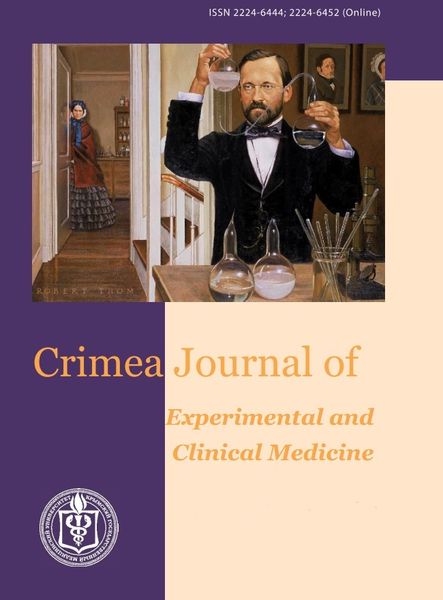The aim of the study was to develop a method for predicting early acute kidney injury (AKI) in patients with thermal skin burns by neural network data analysis. Material and methods. 109 patients were included in the study, 74 of them with thermal skin burns of I-III degree. The levels of cystatin C (Cyst.C), myoglobin (MB), calprotectin (MRP8/14), intercellular adhesion molecules (ICAM, VCAM),my eloperoxidase (MPO) were determined by multiplex analysis on a flow cytofluorimeter. Results. Upon admission to the hospital, generally accepted criteria for the diagnosis of acute kidney injury, such as creatinine concentration and daily diuresis, were determined. The concentration of biomarkers of acute kidney injury, which increases with acute kidney injury, was also determined. In modern medicine, the progressive development of AKI prediction is possible through artificial intelligence. To create a neural network, markers of acute origin with an access point in blood crosslinking were included in the multidisciplinary percepton: Cysta.C; MB; MRP8/14; ICAM; VCAM; MPO. Based on the developed model, the probability of developing AKI in patients with thermal skin burns was determined by analyzing the indicators detected in blood serum, where the accuracy of the forecast of the developed model was 96.3%. Conclusion. The use of a neural network for early diagnosis of acute kidney injury has a high degree of accuracy. This technology should be used.
thermal burns, acute kidney injury, neural network, cystatin C, myoglobin, calprotectin, intercellular adhesion molecules, myelopyroxidase.
1. Chen B., Zhao J., Zhang Z. et al. Clinical characteristics and risk factors for severe burns complicated by early acute kidney injury. Burns. 2020;46(5):1100-1106. doihttps://doi.org/10.1016/j. burns.2019.11.018.
2. Shilova E. M., Smirnova A. V., Kozlovskaya N. L. Nefrologiya. GEOTAR-Media; 2020.
3. Malyarchikov A. V., Shapovalov K. G., Luk'yanov S. A., Tereshkov P. P., Kazanceva L. S. Ostroe pochechnoe povrezhdenie u bol'nyh pnevmoniyami na fone grippa A/H1N1. Acta Biomedica Scientifica. 2021;6(3):53-59.
4. Khandelwal A., Satariano M., Doshi K. Management and outcomes of acute kidney injury due to burns: a literature review. Journal of Burn Care Research. 2024;45(2):323-337. doi:10.1093/ jbcr/irad121.
5. Desai R.J., Kazarov C.L., Wong A., Kane-Gill S.L. Kidney Damage and Stress Biomarkers for Early Identification of Drug-Induced Kidney Injury:A Systematic Review. Drug Saf. 2022;45(8):839852.
6. Benua S. V., Chichcha E. A. Cistatin S kak biomarker hronicheskoy bolezni pochek: poslednie razrabotki. Ekspertnyy obzor molekulyarnoy diagnostiki. 2020;20(10):1019-1026. doihttps://doi.org/10.1080/14737159.2020.1768849.
7. Yanamala A. K., Y. Suryadevara S. Emerging Frontiers: Data Protection Challenges and Innovations in Artificial Intelligence. International Journal of Machine Learning Research in Cybersecurity and Artificial
8. Mfetoum I. M., Ngoh, S. K., Molu R. J., Nde Kenfack B. F., Onguene, R., Naoussi, S. R., Berhanu M. A multilayer perceptron neural network approach for optimizing solar irradiance forecasting in Central Africa with
9. Mudrov V. A. Algoritmy statisticheskogo analiza kolichestvennyh priznakov v biomedicinskih issledovaniyah s pomosch'yu paketa programm SPSS. Zabaykal'skiy medicinskiy vestnik. 2020; 1: 140–150.
10. Lehmann J. S, Rughwani P., Kolenovic M., Ji S., Sun B. LEGENDplex™: Bead-assisted multiplex cytokine profiling by flow cytometry. Methods Enzymol. 2019;629:151-176. doi:10.1016/ bs.mie.2019.06.001.
11. Haines R. W., Fowler A. J., Liang K., Pearse R. M., Larsson A. O., Puthucheary Z., Prowle J. R. Comparison of cystatin C and creatinine in the assessment of measured kidney function during critical illness. Clinical Journal of
12. Khandelwal A., Satariano M., Doshi K., Aggarwal P., Avasarala V., Sood A., Bansal S., Neyra JA., Raina R Management and Outcomes of Acute Kidney Injury due to Burns: A Literature Review. J Burn Care Res. 2024;
13. Folkestad T., Brurberg K. G., Nordhuus K. M., Tveiten C. K., Guttormsen A. B., Os I., Beitland S. Acute kidney injury in burn patients admitted to the intensive care unit: a systematic review and metaanalysis. Crit Care. 2020
14. Tomita-Yagi A., Ozeki-Okuno N., Watanabe Uehara N., Komaki K., Umehara M., SawadaYamauchi H., Kusaba T. The importance of proinflammatory failed-repair tubular epithelia as a predictor of diabetic kidney disease
15. Hu W., Zhao J., Hu Y., Song S., Chen X., Sun Y. Huangqi Jiuni decoction prevents acute kidney injury induced by severe burns by inhibiting activation of the TNF/NF-κB pathway. Journal of Et
16. Bilen A., Calik I., Yayla M., Dincer B., Tavaci T., Cinar I., Mercantepe F. Does daily fasting shielding kidney on hyperglycemia-related inflammatory cytokine via TNF-α, NLRP3, TGF-β1 and VCAM-1 mRNA expression.
17. Hasheminejad M., Dadras A., Toloui A., Bazargani B., Ataei N., Ramawad H. A., Hosseini M. Urinary Calprotectin as a Biomarker in the Early Diagnosis of Pediatric Acute Kidney Injury: A Systematic Review and Meta-





